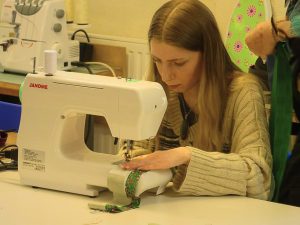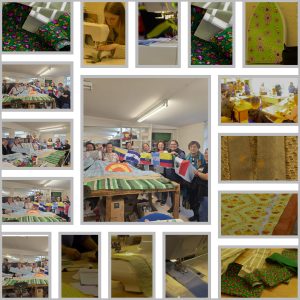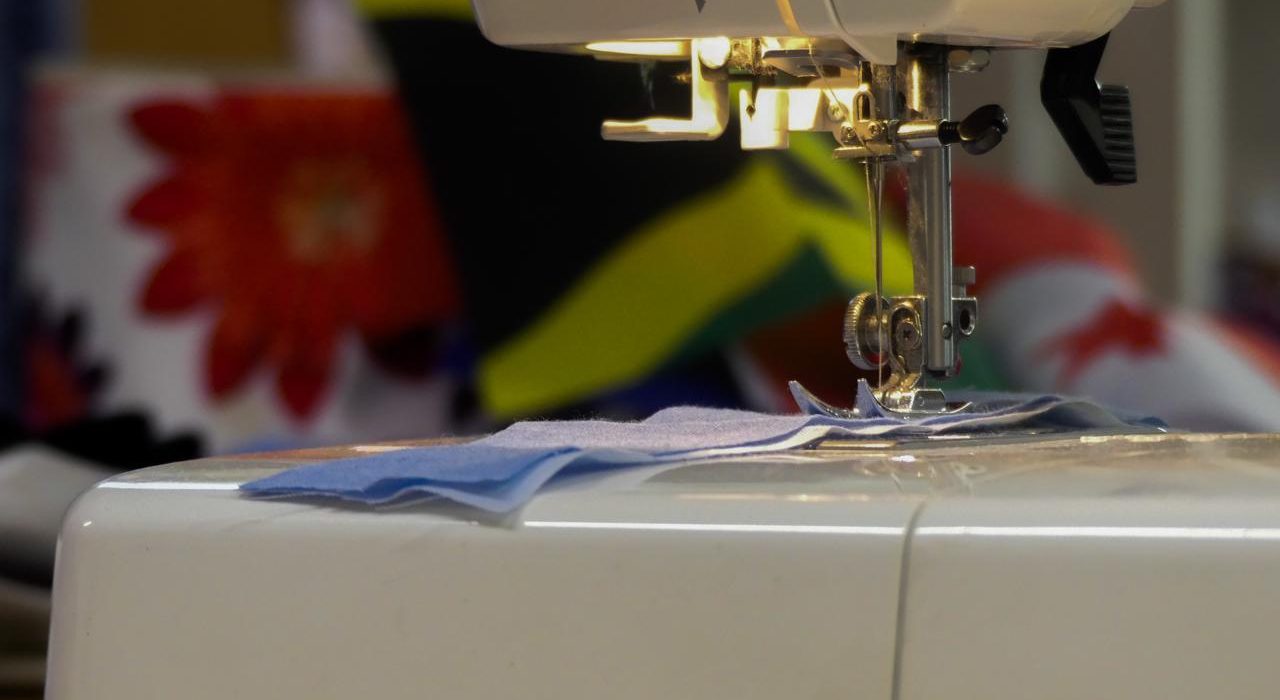Stitched journeys: stories of belonging in Wales
 One spring evening in Swansea, the quiet hum of sewing machines mixed with laughter, conversation, and the occasional word of encouragement in Spanish, Portuguese, and English. Around a table scattered with fabric and thread, people from Honduras, El Salvador, Venezuela, Mexico, Spain, Wales, and beyond stitched pieces of themselves into a collective quilt. Together they created a tapestry not just of colour, but of identity and memory.
One spring evening in Swansea, the quiet hum of sewing machines mixed with laughter, conversation, and the occasional word of encouragement in Spanish, Portuguese, and English. Around a table scattered with fabric and thread, people from Honduras, El Salvador, Venezuela, Mexico, Spain, Wales, and beyond stitched pieces of themselves into a collective quilt. Together they created a tapestry not just of colour, but of identity and memory.
For the workshop, we collaborated with ILA-Wales (Iberians and Latin Americans in Wales), a community group that has grown steadily since 2019. What began as a small network of 20 people from eight countries is now a thriving group of over 200 members. For many of them, Wales is a new home. It’s a place they arrived in for work, love, study, or, in some cases, out of necessity.
Migration from Latin America and Iberia to Wales is not new, but it often goes unspoken. Some came after years of instability back home. Others fled violence, corruption, or economic collapse. Venezuela’s political crisis, the gang violence in parts of Central America, and long-standing inequalities in countries like Brazil and Colombia have pushed people to look for safety and opportunity elsewhere. Spain and Portugal, once destinations themselves, have seen growing emigration following economic downturns. Many of those people, in turn, have found their way to the UK, and in turn to Wales.
Dalila, a fashion designer from Mexico, led the workshop with patience and warmth. She guided people through sewing their countries’ flags, helping them create something that reflected both where they’d come from and where they are now. Some had used sewing machines before. Others were learning for the first time, a little unsure at first, but quickly finding rhythm. The flags came together piece by piece and each square holds a story.
Textiles are woven deep into Latin American life. In many regions, sewing is not just a craft, but a way of preserving culture and surviving hardship. For generations, people have stitched in their day to day lives to create school uniforms, household items, or traditional garments. In refugee camps, border towns, and city apartments, sewing continues to offer a sense of purpose and a way to hold onto home. 
But beyond the craft, something else was happening that evening. People talked. They shared why they came to Wales. They spoke about missing home, learning new languages, finding work, starting over. Some spoke quietly about the trauma they left behind. Others about the joy of raising children in a place where they feel safe.
One participant said she hadn’t spoken her native language in weeks. Another said it was the first time in months she felt truly seen. A Welsh participant reflected on how little she had known about her neighbours’ lives until that day. There was no performance: just people, together, learning from one another.
The final quilt, stitched by many hands, is more than a piece of art. It’s a quiet reminder of what Wales really is: a place shaped by movement, by welcome, and by the countless stories of those who have arrived, settled, and contributed.
Visit our webpage to find out more about the Shaping Nations project and future events.
